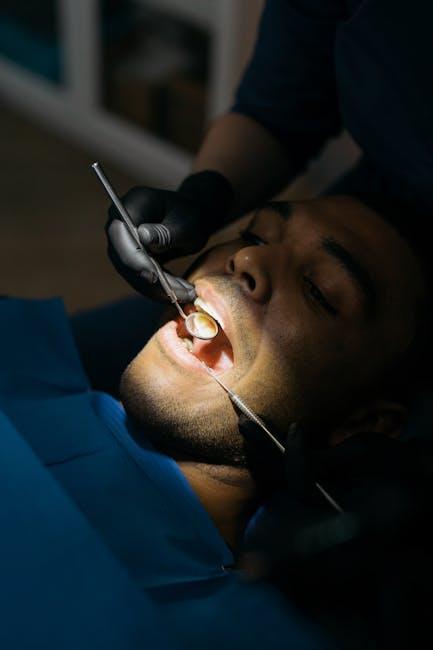In today’s fast-paced world, maintaining good oral health is crucial for overall well-being, yet many individuals find themselves navigating the complex landscape of dental insurance without the safety net of employer-sponsored plans. The good news? Unlocking affordable dental insurance on your own is more achievable than ever. With a plethora of options available, from individual plans to family coverage, you can secure dental health without the burden of employer ties. Whether you’re seeking preventive care, orthodontics, or special treatments, the key to accessing quality dental insurance lies in understanding your choices. Let’s explore how you can find the perfect plan tailored to your needs, ensuring your smile stays bright and healthy.
Exploring the Landscape of Individual Dental Insurance Plans
When navigating the world of dental insurance, understanding the options for individual plans can be incredibly empowering. These plans allow you to manage your oral health costs independently, without relying on employer-sponsored insurance.
Selecting an Individual Dental Insurance Plan:
- Types of Coverage: Most individual dental insurance plans fall into two categories:
- Preventive Care: This includes routine check-ups, cleanings, and x-rays, typically covered at 100%.
- Basic and Major Services: Such as fillings, crowns, and root canals may be covered at a varying percentage (usually 50% to 80%).
- Waiting Periods: Some plans have waiting periods for certain services. Always inquire about these before enrolling, especially if you need immediate care.
- Annual Maximums: Most plans limit the total amount they will pay in a year. Be sure to understand these limits to avoid unexpected out-of-pocket costs.
- In-Network vs. Out-of-Network: Using in-network dentists usually results in higher coverage percentages and lower copayments.
| Plan Features | Typical Coverage | Examples of Providers |
|---|---|---|
| Preventive Care | 100% | Delta Dental, MetLife |
| Basic Services | 70%-80% | Cigna, Aetna |
| Major Services | 50%-70% | Humana, Guardian |
Affordability and Cost:
- Monthly Premiums: Individual plans can range from $15 to $60 per month. Consider your budget and anticipated dental care needs when selecting a plan.
- Out-of-Pocket Expenses: In addition to premiums, account for deductibles and coinsurance, which can affect the total cost of care.
Finding the Right Plan:
- Research and Compare: Use online tools and platforms to compare multiple plans based on coverage, benefits, and costs.
- Consult Agents: Insurance agents can provide personalized advice and help you understand the fine print of each policy.
- Check Reviews: Look up customer feedback on various providers to gauge satisfaction and claim processes.
Selecting the best individual dental insurance plan requires careful consideration of your dental care needs and financial situation. Take the time to explore your options thoroughly, ensuring you make an informed decision that suits your lifestyle.

Understanding Coverage Options for Comprehensive Dental Care
When considering options for comprehensive dental care, understanding the various coverage plans available is essential. Dental insurance can significantly alleviate the costs associated with routine check-ups, needed treatments, and unexpected dental emergencies. Here’s what you need to know to make informed decisions:
| Type of Plan | Coverage Highlights | Typical Cost |
|---|---|---|
| Preferred Provider Organization (PPO) |
|
$50 – $80/month |
| Health Maintenance Organization (HMO) |
|
$20 – $50/month |
| Discount Dental Plans |
|
$100 – $200/year |
| Indemnity Plans |
|
Varies widely |
Each type of plan comes with its own set of benefits and drawbacks. Here are some key points to consider:
- Network Restrictions: PPOs often provide greater flexibility in choosing care providers, while HMOs may require you to visit in-network dentists only.
- Cost Structure: Premiums can vary significantly between plan types, as shown in the table. Weigh your monthly costs against potential out-of-pocket expenses.
- Coverage for Procedures: Ensure that your plan covers the types of procedures you anticipate needing, such as extractions, bridges, or orthodontics.
- Preventive vs. Major Services: Many plans emphasize preventive care, covering cleanings and check-ups fully, but may have caps on major procedures.
- Waiting Periods: Some insurance plans have waiting periods before coverage begins, especially for major procedures. Look for policies that minimize these waits.
In your quest for affordable dental coverage, it’s vital to compare different plans, assess your expected dental needs, and find a balance between premium costs and coverage benefits. By doing thorough research, you can unlock the right insurance options that provide both care and coverage at a price that suits your budget.

Tips for Finding Budget-Friendly Premiums and Deductibles
Finding affordable dental insurance can feel overwhelming, especially when trying to navigate premiums and deductibles that fit your budget. Here are some practical tips to help you secure budget-friendly options:
- Compare Multiple Quotes: Use online marketplaces like eHealthInsurance or HealthSherpa to compare various dental plans. Make sure to evaluate not only the premiums but also the coverage they offer.
- Consider Dental Discount Plans: These are not insurance but offer discounted rates at participating providers. They can be a good alternative if you need immediate dental care without high premiums.
- Assess Your Dental Needs: Consider how often you visit the dentist and what services you typically require. Basic plans may suffice if you only need preventive care, while comprehensive plans are better for extensive treatments.
- Look for In-Network Providers: Choose insurance plans that have a wider network of dentist offices near you. In-network providers usually charge lower rates, which can help you save on out-of-pocket expenses.
- Understand Maximums and Limits: Pay close attention to the annual maximum payout of the plan and any limits on specific types of care. This can greatly influence your total costs over the year.
- Flexible Spending Accounts (FSAs) and Health Savings Accounts (HSAs): If applicable, contribute to an FSA or HSA. These accounts allow you to set aside pre-tax dollars for medical expenses, effectively lowering your overall costs.
- Consult Your Employer: Even if you aren’t currently using employer-provided insurance, check if they offer any supplemental dental plans that could save you money.
| Insurance Option | Pros | Cons |
|---|---|---|
| Traditional Dental Insurance | Comprehensive coverage, provider network discounts | Higher premiums, waiting periods for certain services |
| Discount Dental Plans | Lower initial costs, no waiting periods | No coverage for major procedures |
| Indemnity Plans | Flexibility in choosing providers | More paperwork, potential out-of-pocket costs |
By keeping these strategies in mind, you can navigate the often tricky landscape of dental insurance to find a plan that meets your budget without sacrificing necessary dental care.

Maximizing Benefits: Strategies for Effective Use of Your Plan
When it comes to making the most of your dental insurance plan, it’s essential to understand its features and how to navigate the system effectively. Here are some strategies to ensure you maximize your benefits and keep your dental expenses manageable:
- Know Your Coverage: Review the details of your insurance policy to understand what services are covered, including preventive care, basic procedures, and major treatments. Look for limits on coverage per procedure and annual maximums.
- Use In-Network Dentists: Sticking to providers within your insurance network can save significant costs. In-network dentists have agreed to specific rates, which means you’ll pay less out-of-pocket compared to out-of-network providers.
- Schedule Regular Checkups: Preventive care, such as biannual dental checkups and cleanings, is typically covered at 100%. These visits can help catch issues early before they become costly problems.
- Plan Major Treatments Wisely: If you need bigger procedures like crowns or root canals, strategize the timing to align with your benefits renewals. This ensures you maximize your coverage limits.
- Keep Records: Document all your dental visits and treatments received. This can help you track your spending and verify the benefits claimed with your insurance provider.
- Leverage FSAs or HSAs: If you have a Flexible Spending Account (FSA) or Health Savings Account (HSA), consider using these funds for dental expenses. Contributions are pre-tax, which can reduce your overall costs.
- Ask About Payment Plans: If a procedure isn’t fully covered, inquire about financing options directly from your dentist’s office. Many offer payment plans that allow for manageable monthly payments.
Here’s a quick comparison table to help clarify common procedures and their potential coverage:
| Procedure | Typical Coverage (% of cost) | Out-of-Pocket Estimate (Without Insurance) |
|---|---|---|
| Preventive Care (Cleanings, Exams) | 100% | $75-$200 |
| Fillings | 80% | $150-$300 |
| Crowns | 50% | $800-$1,500 |
| Root Canals | 50-80% | $500-$1,500 |
By implementing these strategies, you can ensure you’re making the most out of your dental insurance plan, leading to healthier smiles without breaking the bank.

Wrapping Up
In conclusion, accessing affordable dental insurance outside of your employer’s benefits can be a game changer for your oral health and financial well-being. With a variety of options available, you can find a plan that fits your specific needs and budget, empowering you to take control of your dental care. Don’t let high costs deter you from maintaining a healthy smile-explore your options today and unlock the peace of mind that comes with comprehensive dental coverage. Your journey to affordable dental health starts now-take the first step and invest in your smile for years to come.














